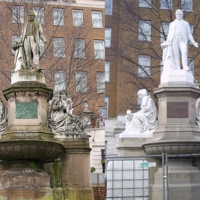
Rededication of memorial to Joseph Sturge
A nineteenth-century monument celebrating the philanthropic efforts and commitment to social reform of the Quaker abolitionist Joseph Sturge was restored from a state of disrepair in 2007 as part of Birmingham's bicentenary commemorations. The monument, sculpted by John Thomas, was first unveiled in 1862 by the city's nonconformist religious leaders and local businessmen to celebrate Sturge's legacy. The restoration work was carried out with funding from Birmingham City Council, The Birmingham Civic Society and the Sturge Family. A rededication service took place on 24 March 2007.
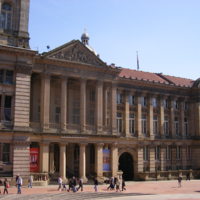
Birmingham Museum and Art Gallery
Birmingham Museum and Art Gallery has over forty display galleries that explore the development of Birmingham as a city, through its diverse communities. Since opening in 1885, the museum has built a vast collection of social history, art, archaeology and ethnographic items. It is one of nine sites managed by Birmingham Museums, the largest museums trust in the UK, whose vision for their service is, ‘to reflect Birmingham to the world, and the world to Birmingham.’ Housed within Birmingham's council buildings in the city's Chamberlain Square, the site welcomes around one million visitors a year.
Slavery and abolition feature as themed displays within the ‘Birmingham: Its People and Its History’ gallery, which dominates the third floor of the Victorian museum. Initially developed as part of the 2007 bicentennial commemoration activities, the displays highlight the contradictory nature of Birmingham’s relationship with the slave trade. Visitors are informed, through both interpretive text panels and collections artifacts on display, about the goods manufactured in Birmingham that were taken to Africa to trade in exchange for human beings. Simultaneously, the presence of antislavery activists in the city is explained, with digital interactives, portraits and abolitionist material culture all illustrating the role of Quakers and other prominent abolitionist figures, including Joseph Sturge and Olaudah Equiano.
The displays also alert visitors as to the existence of modern slavery by a panel headed with the words, ‘Around the world, people are still enslaved today.’ The visitors are then invited to leave their own comments as to how society can help to stop it in their community and around the world.
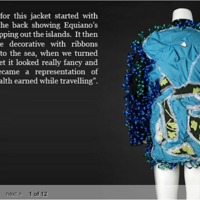
The Equiano Project Culture Clubs
Part of the Equiano Project led by Birmingham Museum and Art Gallery, the Culture Clubs were a series of outreach projects enabling contributions by local schools and community groups to the way Equiano’s story is told and the issues surrounding how his experience is represented. The four groups - Techno Elders, Hockley Youth Project, Deansfield Secondary School and King George V Primary School - worked closely with the project teams and professional artists to produce work based upon Equiano’s life story. Their work featured within the Gas Hall and Soho House exhibitions.
The Hockley Youth Project’s work was displayed in the ‘Unshackled’ exhibition at Soho House in Birmingham, once home of the industrialist Matthew Boulton. Working with visual artist Nicola Richardson, the group produced a series of suits and artworks which explore themes around Equiano’s life, particularly his success as a businessman and entrepreneur.
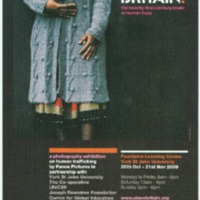
Slave Britain: The 21st Century Trade in Human Lives
This photographic exhibition focused on human trafficking was produced by a partnership of Panos Pictures, Anti-Slavery International, Amnesty International, Eaves and UNICEF. Photographer Karen Robinson’s portraits and tales of women trafficked into prostitution explore the devastating impact on their lives. Also on display were David Rose's panoramic photographs of the ordinary British streets where the stories of modern-day slavery have been played out. The photographs were mounted on a cage-like structure which was specially designed for the exhibition at St Paul's Cathedral. The exhibition was also shown in Edinburgh, Hull and Warsaw, and in 2008, in York.
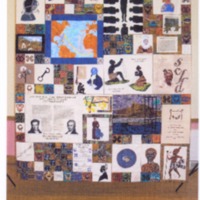
In Stitches
The In Stitches project was led by the African Families Foundation (TAFF) and brought together British, African and African-Caribbean women's quilting groups meeting in London, Liverpool, Bristol, Manchester and Birmingham. The In Stitches Quilt, designed by Janice Gunner, included 60 squares of embroidered images, texts and symbols, depicting historic figures, scenes and artefacts associated with the transatlantic slave trade and its abolition. The Quilt used several of the Adinkra symbols from Africa, originally printed on fabrics worn at funerals by the Akan peoples of Ghana. The accompanying work pack was designed to support learning about slavery based on the four themes of the Quilt: Capture, the Middle Passage, Life in the 'New World', and Proscription of Slavery. The Quilt was unveiled at City Hall in London, and then toured to the British Empire and Commonwealth Museum (Bristol), Central Library (Liverpool), Soho House (Birmingham), the International Quilt Festival (Birmingham) and Central Library (Manchester).
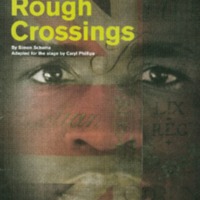
Rough Crossings
Historian Simon Schama's true story of a plantation slave (Thomas Peters) and a British naval officer (John Clarkson) and their search for freedom at the time of the American War of Independence. Schama's account was adapted for the stage by Caryl Phillips, directed by Rupert Goold and produced by the Headlong Theatre Company. It explores ideas of racial identity, home and freedom, as former slaves who fought for the British army are led across the Atlantic to the newly-created province of Sierra Leone. The play toured West Yorkshire Playhouse, Birmingham Repertory Theatre, Liverpool Everyman and Lyric Hammersmith.
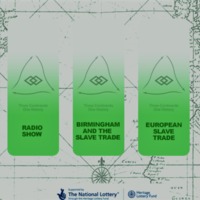
Three Continents, One History: Birmingham, the Trans-Atlantic Slave Trade and the Caribbean
'Three Continents, One History' was a community project led by the African-Caribbean Millennium Centre (ACMC) to explore the historical links between Birmingham, the transatlantic slave trade and the Caribbean. Research focused on themes such as the region's manufacturing history and its links to slavery, the role of local regiments in keeping order on Caribbean plantations, the African presence in the West Midlands, and the region’s role in the abolitionist movement. The project aimed to examine the contemporary relevance of 1807 and the slave trade to Birmingham’s diverse communities, to contribute to a reshaping of the National Curriculum, to establish a physical archive and an interactive website. The research was shared with the public via weekly broadcasts on New Style Radio (a community radio station housed in ACMC) and simulcasts with Caribbean and African radio stations. Other events included conferences, dramatisations and discussion workshops.
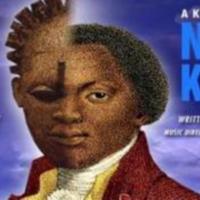
Nobody Knows
Written and directed by Mervyn Weir, 'Nobody Knows' used drama, dance, music and imagery to explore the history of the transatlantic slave trade and its legacy today. Told through the eyes of Olaudah Equiano, the play celebrated the dignity, pride, and spirit of Black people as they fought for emancipation from slavery. In 2007 the play was presented by Krik Krak productions during the Routes to Freedom season at The Drum in Birmingham.
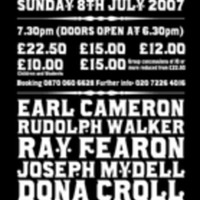
Splendid Mummer
A play by Lonne Elder, 'Splendid Mummer' looks at the life of Ira Aldridge (1807-1867), the goundbreaking 19th century actor. Aldridge overcame racism and prejudice in European theatres to break away from stereotypical comedy roles and become one of the first Black Shakespearean actors. In 2007, the play was presented by CETTIE (a London charity working with schools, libraries, theatres, and community venues), directed by Malcolm Frederick, and starred Shango Baku. It was performed in various venues in London and at The Drum in Birmingham, and was accompanied by a feature exhibition on Aldridge by Positive Steps. 'Splendid Mummer' was produced in collaboration with the Ira Aldridge Bicentenary Project.
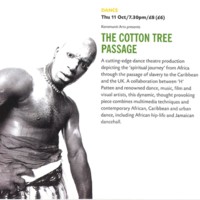
The Cotton Tree Passage
'The Cotton Tree Passage' was a dance theatre production by Koromanti Arts performed at The Drum in Birmingham as part of the Routes to Freedom season. The production depicted the spiritual passage of slavery from Africa to the Caribbean and the UK. A collaboration between 'H' Patten and dance, music, film and visual artists, this piece combined multimedia techniques and contemporary African, Caribbean and urban dance, including African hip-life and Jamaican dancehall.
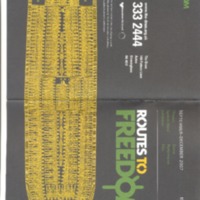
Connexions: History in the Making
20 young people from the Aston area of Birmingham worked on a commemorative project exploring the impact of the 1807 Act on the African, Caribbean and Asian communities in the UK and the contributions of these communities to British society since then. Their performance at The Drum showcased poetry, singing and dance.
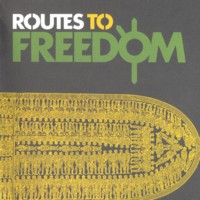
Routes to Freedom
The 'Routes to Freedom' season of events took place throughout Autumn 2007 at The Drum, an intercultural arts venue in Birmingham. The programme explored the struggle for social justice and equality in relation to African, Asian and Caribbean communities, and marked two key historical events and their impact: the bicentenary of the Abolition of the Slave Trade Act and the 60th anniversary of the partition of the Indian subcontinent. The programme was made up of theatre productions, touring exhibitions, film screenings, readings, dance performances and special events, including 'Coolies of the Caribbean' and a conference about Olaudah Equiano.
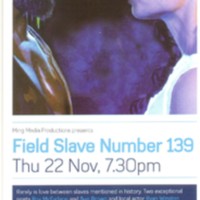
Field Slave Number 139
'Field Slave Number 139' was written and produced by Ava Ming, and commissioned by The Drum in Birmingham as part of their Routes to Freedom programme. The play focuses on a love story between a dark-skinned field slave and mulatto house slave on a plantation in America's Deep South. 'Field Slave Number 139' is written mostly in monologues with occasional interaction between the actors: all three were on stage for the duration of the piece. The 2007 production featured two performance poets and a local actor.
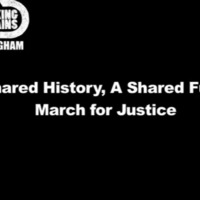
A Shared History, A Shared Future
A Shared History, A Shared Future was a series of projects led by Birmingham Libraries to engage with different communities within Birmingham. The project as a whole identified archival materials, local historical documents and music with an emphasis on the diverse multicultural nature of historical and modern indentured slavery, and how it relates to everyday lives in Birmingham. Over 1000 participants from schools and community groups took part in over 150 workshops to create stories, artwork, banners, protests, games, films, dances, drama and performances. A resource pack, the liberty box, was produced to encourage community groups, youth groups and others to explore the issues of slavery. In August 2007, the project organised the March for Justice in Birmingham city centre, a recreation of the Quaker and philanthropist Joseph Sturge's march against slavery in August 1838. The day included an anti-slavery fashion show, a limbo performance, storytelling, African drumming, and a Slavery Question Time Special hosted by an actor representing Olaudah Equiano.
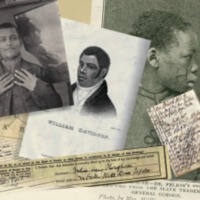
History Detectives: Black People in the West Midlands 1650-1918
SCAWDI are a Birmingham based community group specialising in working with local volunteers to research the early presence of Black people in the West Midlands and learn more about their local history. Different projects sought to explore this heritage. ‘In the beginning …’ looked at enslaved Africans who came to the West Midlands to live with wealthy land owners in the area’s stately homes. ‘History Detectives’ took this work further to identify and construct biographies for the black individuals who came to the West Midlands before 1918. The project created a database of almost 200 individuals: the characters explored connect to themes of slavery, class, migration and religion. ‘A day in the life …’ created a black heritage trail detailing the locations attached to these stories.
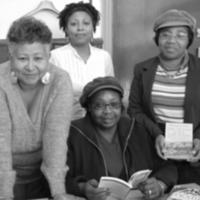
Interwoven Freedom
SCAWDI are a Birmingham-based community group specialising in working with local volunteers to research the early presence of Black people in the West Midlands. In collaboration with English Heritage, ‘Interwoven Freedom’ enabled a group of local women to visit archives, exhibitions and historic sites and explore the role of women in the abolitionist movement. The participants drew on traditions of abolitionist women such as Elizabeth Cadbury creating and distributing workbags filled with anti-slavery manifestos by making their own textile bags from fair trade cotton and African cloth. They wrote their own manifestos which mixed historical facts with fictional stories and poems. The accompanying exhibition of textiles, text panels and an audio documentary toured London and 11 regional venues. The exhibition included photographs documenting the project by photographer Vanley Burke.
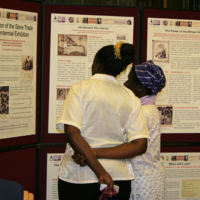
Abolition of the Slave Trade Bicentennial Exhibition
This exhibition held by the Cadbury Research Library: Special Collections at the University of Birmingham included material from the archives of the Church Missionary Society held there, and some of its rare book collections. The accompanying information boards are featured here. The exhibition focused on the role of religion in the abolitionist movement, the power of the African voice in literature, and the role played by Birmingham residents in the anti-slavery campaigns. A booklist on anti-slavery publications held at the library was also produced. The exhibition was part of a University-wide initiative, with additional involvement from academic departments and the Guild of Students. An online exhibition was also produced in collaboration with the Library of the Religious Society of Friends: 'Quakers and the path to abolition in Britain and the colonies'.
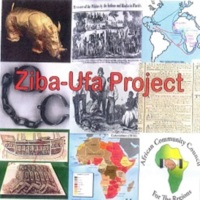
Ziba-Ufa
The phrase 'Ziba-Ufa' is Kiswahili for 'Closing the Gap'. Led by ACCR - the African Community Council for the Regions - this project aimed to close the gap between past and present by undertaking research from an African perspective. Blind Memory was a multimedia exhibition of images of Africa, slavery and resistance held at the Drum Arts Centre in Birmingham. The exhibition looked at memories relating to the transatlantic slave trade and how they affect beliefs and feelings; one of the aims of the exhibition was to rectify the amnesia and blind memory which many people are perceived to have in relation to slavery.
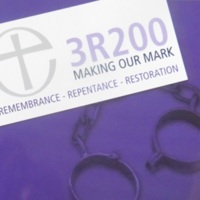
Making our Mark: Remembrance, Repentance and Restoration in 2007
This project was the Church of England’s official response to the bicentenary, as CMEAC (established by the Archbishops’ Council) explored the Church’s multi-faceted role in the history of slavery in Britain. Making our Mark focused on connections with local communities, opening access to heritage, and raising awareness of the legacies of slavery. The project had two main strands. The first was a set of regional dialogues – the Bicentenary Hearings – which represented local opportunities for discussion about experiences of slavery, as a way to make new connections between past and present, education and action. The Hearings took place in Liverpool, London, Birmingham, Hull and Southwark in February and March 2007. The second strand was the Walk of Witness, a heritage trail through London on 24 March 2007. Participants included government representatives, leaders in the Church of England, social justice organisations, ecumenical and multi-faith partners, and schools. A pack was produced for schools, including a DVD with footage from the Walk and Hearings.
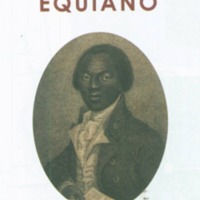
The Equiano Project
The Gas Hall at Birmingham Museum and Art Gallery was host to a biographical exhibition of the life and adventures of Olaudah Equiano, a leading African figure in the British abolition movement in the 18th century. The project was led by Birmingham Museum and Art Gallery and the Equiano Society. The national exhibition was inspired by Equiano's autobiography 'The Interesting Narrative' (1789), by international and national artworks, and objects from Birmingham museums’ collections. It provided a narrative of Equiano’s life, and also explored wider local links between the West Midlands and the transatlantic slave trade. The Equiano Project also created a website, educational packages (available to buy via the project website), and a series of events and outreach activities. The exhibition publication 'Equiano - Enslavement, Resistance and Abolition' was edited by Arthur Torrington, Rita McLean, Victoria Osborne and Ian Grosvenor, and provided new insights into enslavement, resistance, abolition, and the African presence in Britain in the 18th century. Two touring exhibitions were loaned to community centres, libraries and other venues, including Walsall Museum, Sheffield and District African Caribbean Community Association and the Hudawi Cultural Centre in Huddersfield.